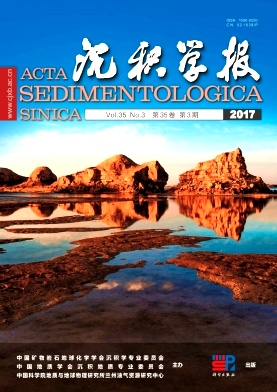A Method Forecasting Distribution Areas of Fault Transporting Oil-gas Migration and Its Application
doi: 10.14027/j.cnki.cjxb.2017.03.016
- Received Date: 2016-06-08
- Rev Recd Date: 2016-07-20
- Publish Date: 2017-06-10
-
Key words:
- fault transporting /
- hydrocarbon migration form /
- distribution area /
- prediction method
Abstract: To study the play of fault in oil-gas accumulation and distribution, based on the division of fault transporting oil and gas forms, the conditions required for fault transporting oil-gas and the method forecasting distribution are studied. The results show that the fault transporting oil-gas migration forms are different and the required conditions are also different. The conditions required for fault vertically transporting oil-gas upward is that the fault locates in the area where mature source rocks exist. The condition of fault vertically transporting oil-gas downward is the fault located in the maturation zone with ex-high pressure and supply oil ability. The condition of fault laterally transporting petroleum migration is that the fault locates in where cap rocks faulted-contact thickness is greater than or equal to the minimum faulted-contact thickness for oil-gas lateral migration. The condition of fault laterally diameter changing transporting petroleum migration is that the fault locates in the area that cap rocks faulted-contact thickness less than faulted-contact thickness for oil-gas lateral migration. By comparing the matured source rocks distribution or the matured source rocks distribution with anomaly high pressure and supply hydrocarbon ability, oil-gas lateral migration distribution, oil-gas non-lateral migration distribution and fault distribution, a prediction method of different fault transporting distribution area is established. Then it is applied into the study of predicting distribution areas of fault transporting oil-gas migration in Ed2,Ed3 Formation, Jizhong sag of Bohai bay basin, the Fuyang Reservoir in the Sanzhao Depression of Songliao basin, and Ed2 in Wenan slope of Baxian depression, Bohai bay basin. The prediction results are consistent with the discovered distribution of oil and gas, indicating that the prediction method of fault transporting oil and gas migration is feasible.
| Citation: | FU Guang, LI ShiZhao, YANG DeXiang. A Method Forecasting Distribution Areas of Fault Transporting Oil-gas Migration and Its Application[J]. Acta Sedimentologica Sinica, 2017, 35(3): 592-599. doi: 10.14027/j.cnki.cjxb.2017.03.016 |






 DownLoad:
DownLoad: